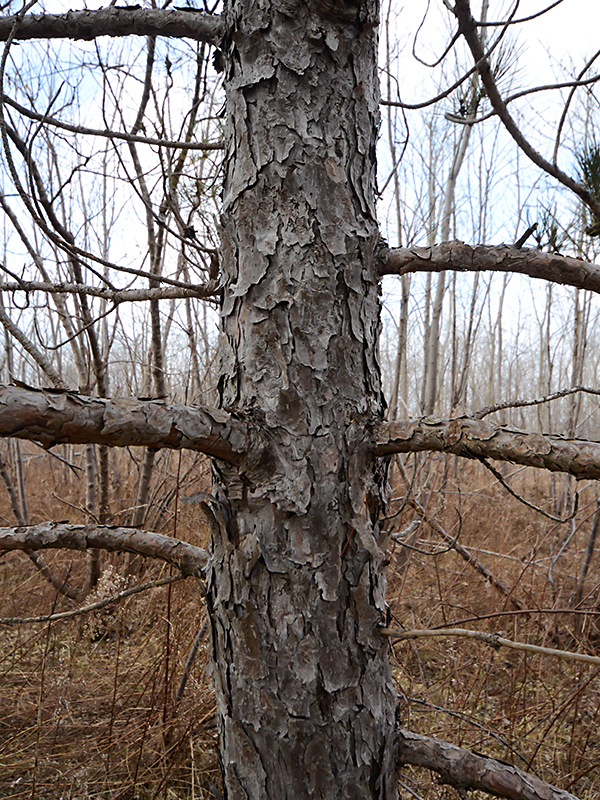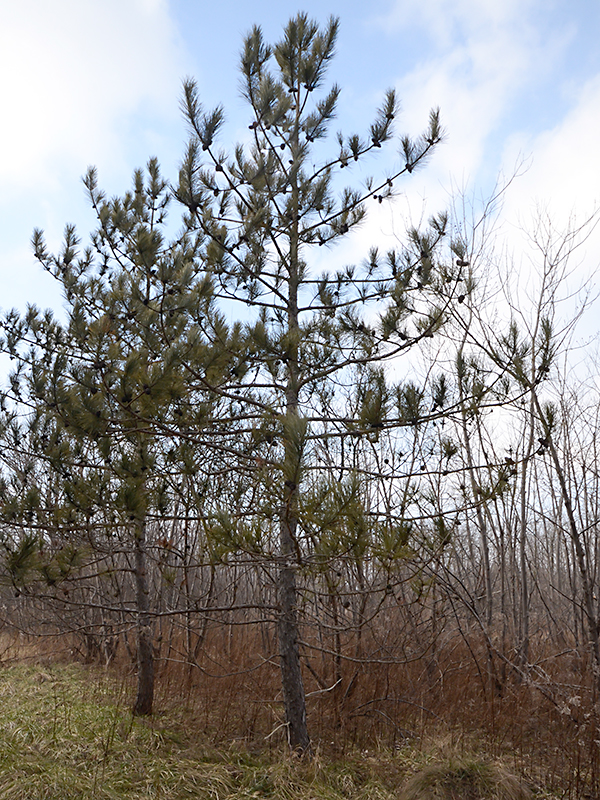
Woody > Pinus > Pinus resinosa > Pinus resinosa
Pinus resinosa
Red Pine
Mike's
Opinion


"
The common name Red Pine is derived from the reddish colour between the fissures of the bark. It is a native tree that can adapt fairly well to different conditions but is not salt tolerant. It does not really possess any stand-out features (other than attractive bark) and therefore is not used in the cultured landscape.
Michael Pascoe, NDP., ODH., CLT., MSc. (Plant Conservation)
"
| Family |
| Pineaceae |
| Genus |
| Pinus |
| Species |
| resinosa |
| Category |
| Woody |
| Type |
| Tree (evergreen) |
| Pronunciation |
| USDA Hardiness Zone |
| 2 - 5 |
| Canadian Hardiness Zone |
| 0a - 6a |
| RHS Hardiness Zone |
| H7 |
| Temperature (°C) |
| -46 - (-26) |
| Temperature (°F) |
| -50 - (-15) |
| Height |
| 15 - 25 m |
| Spread |
| 2.5 - 6 m |
Photographs
Description and Growing Information
Flowering Period
| General Description |
| Red pine is a medium sized evergreen tree with medium to dark green needles that occur in dense turfs at the end of branchlets and a red-brown coloured bark. |
| Cultivation |
| It requires full sun and grows best in a well drained sandy soil with low pH. Known to be cold tolerant, but dislikes intense heat. Not tolerant of salt. |
| Shape |
| The crown is conical in young trees, taking on a more narrow oval shape with age. |
| Growth |
| Medium |
| ID Characteristic |
| It can be identified by the reddish colour of the bark or by bending the needles which will snap cleanly and easily. |
| Pests |
| There are quite a few insects known to feed on Red Pine, but only a few can cause mortality or serious damage. These include sawflies, Saratoga spittlebug, the Zimmerman pine moth and the red pine shoot moth among others. |
| Habitat |
| Adapted to the colder climates, it can usually be found on sandy and rocky soils at higher altitudes |
| Bark/Stem Description |
| On young trees, the bark is orange-red and scaly. The older bark is a red–brown with a bit of silver–grey with thick scaly plates. |
| Flower/Leaf Bud Description |
| Buds are ovoid or conical, red-brown, approx 1.3 cm long, resinous and with loose scales. |
| Leaf Description |
| Shiny, medium to dark green brittle needles arranged in fascicles of two, 12-18 cm long. Straight or slightly twisted, densely arranged and persisting for 4 years. |
| Flower Description |
| Monoecious tree. The males are roundish and light red, found in large clusters at the branch tips. The females are short, red–brown cones. |
| Fruit Description |
| Light brown cone, ovoid in shape, 5 cm long and 3 cm wide found alone or in pairs. Appears in May or early June, matures in early summer in Ontario. |
| Colour Description |
| The foliage is medium to dark green all year long. The bark is red–brown |
| Texture Description |
| Medium. |
| Notable Specimens |
| The French River District, Ontario, Canada. |
| Propagation |
| It is easily propagated by seed as they will germinate immediately upon sowing since they have no dormancy. |

